
SwiftSword
-
Posts
146 -
Joined
-
Last visited
Content Type
Forums
Detector Prospector Home
Detector Database
Downloads
Posts posted by SwiftSword
-
-
You can get it on Amazon, or at pretty much any auto parts store.
-
It did! I love evaporust. Reverse electrolysis would have worked as well, but I find I lack the patience and turn the amperage up too high, which results in pitting and things falling apart, especially wrought iron. The chemical works at its own pace, no matter how much I'm hopping up and down 😄
-
During last week's event at a 1750s farm in Ashburnham, MA, I pulled a domed lump of rust from about a foot under a former pasture. There wasn't much to see apart from the tab sticking out on one side, and the very obvious nipple. This immediately led to the designation of "colonial pasty", but nobody had a clue as to what it really was.
At home, I dropped the find in evaporust for a week, with daily brushings. It soon became evident that the little dome was decorated. It was too small for a Victorian door knob, and then there was that tab sticking out. A friend suggested it might be a bit or bridle boss. Modern ones are mostly plain and are typically made from lead or copper alloy. But 18th century ones are often elaborately decorated and are sometimes made from cast iron.
The remaining tab on mine (there were two, but only a scar remains of the second one) doesn't have the characteristic hole, but apparently that's not necessarily a deal breaker. Sometimes the tabs were fitted into leather pockets on the bridle.
I would love to hear your considered opinions on this!
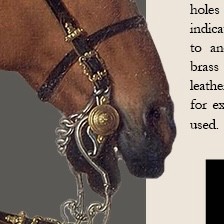
-
Yes, they were made by the millions. It's not a rare thing, but it's the only one I've found 😉
-
On 8/9/2023 at 3:53 PM, JCR said:
Shows how well they used to plate metal.
I thought it was silver plated myself. But whil cleaning it became apparent that it's solid metal. Some kind of nickel alloy.
-
I learned recently that a grizzly can run 30mph, and that they have enough bite force to crush a bowling ball. They also don't bother killing you. They just pin you down and start eating.
-
This is a Boyce MotoMeter, a temperature gauge for your 1920s automobile. It sat atop the radiator as a useful hood ornament that told you when your coolant was about to boil over. Found in a trash dump in eastern Massachusetts.
These were originally sold as aftermarket parts, but soon carmakers and dealers sold them installed, and had them customized with their logos. This one with the plane and radiator symbol would have been mounted on a 1920s Packard car or truck. Apparently they came in different sizes depending on the use. I don't yet know which one this is.
These things are collectibles in their own right, though probably not in this state. The frame is pot metal and has corroded significantly. The wreaths that hold the crystals in place are German silver, or perhaps some other kind of nickel alloy. Saltwater and aluminum foil didn't do squat, but a good soak in vinegar water and a light scrubbing with steel wool and barkeeper's friend soon had them gleaming.
This was bycatch from my most recent bottle dump adventure. It literally popped out of the ground as I was removing a glass jar, so my detector was not involved. I'm sure it would have sounded spectacular 😄
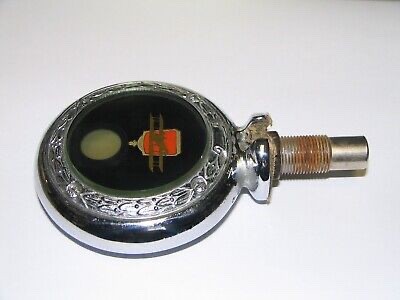
-
My main problem with these two-box setups is that I'm not prepared to dig 5' deep holes.
-
It's definitely an odd mix. So much salad dressing, but where are the beer and soda bottles? I didn't sift, but went through the debris with my gloved hands. Might have to go back with a sieve!
-
Last Wednesday I was traipsing around my local woods (former farmland) here in Eastern Massachusetts when I hit a concentration of signals near an old stone wall. It turned out to be barrel hoops, an old pail, and a multitude of what I think are old battery cores. But with each object I also dug broken glass and crockery. Everything was just under the surface, and the whole looked very much like the bottle dump I had found only a few weeks earlier a couple of miles away. I put the detector aside and dug horizontally. Soon I pulled out an intact medicine bottle, made for a cork, with a smooth lip, so early 1900s at the latest. The other bottle dump had been from the 1930s. This was going to be good!
The top layer of soil was a dense mat of roots. I soon switched to lifting a section with one hand like a blanket, and rooting around under it with the other, pulling whole and broken bottles out by the handful. It wasn't just bottles - there was a large amount of broken crockery, barrel hoops, battery cores, bricks, oyster shells, animal bones, bits of sheet metal, wire, and plate glass.
It took me three visits to clear the place out. In the end, it appears to have been a shallow ditch right in front of the wall, about 3 feet by 50 feet. Most broken items were near the wall (probably thrown or crushed against it), most intact bottles were about 1-2 feet away from the wall, and mostly right at the surface.
Last Sunday it bucketed all day, so I chose to do the dishes, as it were. I used dish soap, sponges, a regular bottle brush, a pipe cleaner wrapped around a length of wire, and one of those long, flexible grabbers with a bit of steel wool at the end. It took a few good hours to do everything. My hands are quite sore, but I very much enjoyed it. The most fun are the embossed bottles. I used the text on them as keywords and found that most have been thoroughly researched, with each one being its own rabbit hole.
The bottles contained health and beauty products, "snake oil" patent medicines, laundry chemicals, dyes and shoe polish. A disproportionate number were for salad dressing. There were few, if any, for drinks or liquor.
One that stood out for me was "Johnson's American Anodyne", a patent medicine that was indicated for "coughs, colds, grippy cold, colic, asthmatic distress, bronchial colds, nasal catarrh, cholera morbus, cramps, diarrhea, bruises, common sore throat, burns and scalds, chaps and chafing, chilblains, frost bites, muscular rheumatism, soreness, sprains and strains"
It was able to effect all these cures because its main ingredients were alcohol and morphine. Apparently these bottles are sometimes found on WWI battlefields in France. American troops weren't issued an alcohol ration, so the Doughboys took a swig of this stuff before they went over the top.
Another was "Dr. True's Elixir", which was advertised as the world's #1 intestinal worm cure. It actually contained an ingredient that paralyzed the heads of worms and caused them to be shat out, so it's not "snake oil" per se, but in those pre-FDA days, it was advertised in the most outrageous fashion, with the inventor claiming to have cured patients of tapeworms 70 and 80 feet long, of spotted lizards, snakes, and other unlikely creatures. Nonetheless, this medicine seems to have been very ubiquitous, and this fascinating bottle isn't exactly rare.
More pictures:
Same product, different packaging.
All the "medicine" bottles.
Bromo-Seltzer cured many a hangover.
I believe the middle one was for olive oil.
There's still 110+ year-old vaseline in the jar. I'm not trying it, though.
This was a popular brand of salad dressing. Manufactured by Fred Fear & Co. which is the coolest name ever.
Worm Expeller!
This bottle of dye still had a brush in it.
It was a lot of dish-washing.
There were quite a few metal finds mixed in. Nothing exciting.
Lots and lots of broken glass as well.
Spoons, the bane of my existence.
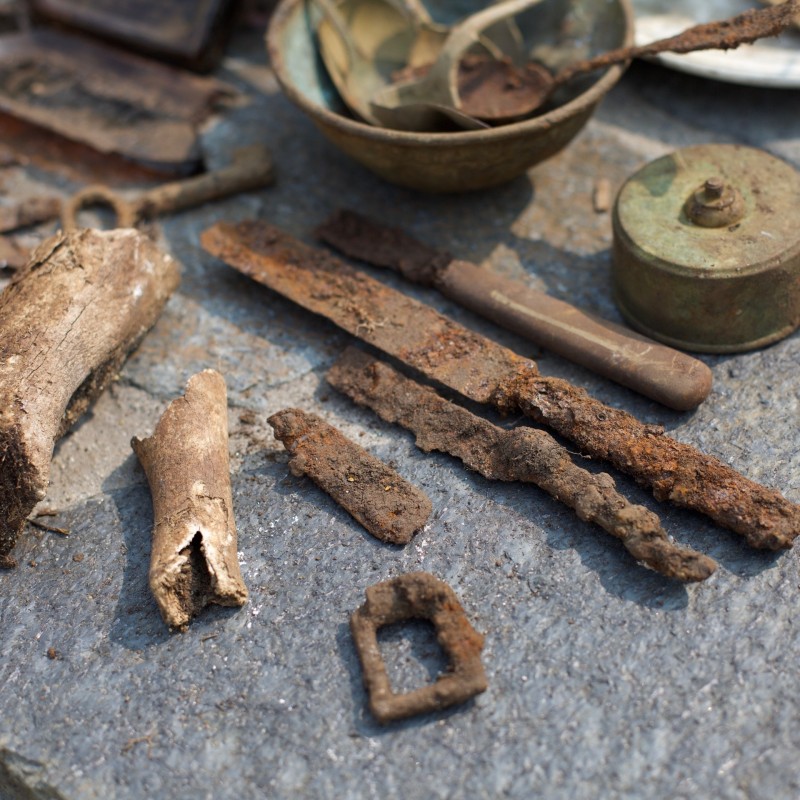
Knives are usually pretty rare. Here I found three in one go.Lots of clam and oyster shells, and thousands of pork and beef bones.
it was a lot of fun and a lot of work. Time for a cold brew from an ancient glass 😄
-
-
On 6/28/2023 at 11:04 AM, rod-pa said:
pretty awesome condition for a shoe buckle. nice save!
The key is in cleaning it correctly. The original surface is hair thin and totally corroded. You see where it has cone off in a few places. Underneath it fluffy green corrosion, and under that pitted metal with brown corrosion. To preserve the original surface, I dried the buckle slowly, then used a soft brush to get the loose dirt off, then applied a penetrating, hardening oil (Odie's Oil) to stabilize the surface. I used a soft brush to work it in, and a soft, lintfree cloth to remove the excess (and extra dirt). Then I put it away for a week or so to give the oil time to cure. Now it's safe to handle, and the surface is preserved. You can even see tool marks where the maker cleaned up the casting.
if I had rinsed it in water, all this would have been lost.
-
22 hours ago, fogrider said:
I really like the pocket watch case.
It's a bit of an oddity. The two extra ports at the top indicate that the movement had extra features, such as an alarm, that would have made it quite an expensive movement. The case is disproportionally cheap - super thin gold plating, etc. I've since learned that expensive movements were sometimes put into "starter cases" by the manufacturer, and were intended to be upgraded eventually. As there was no trace of a movement in this case, I would like to believe that the movement, like a hermit crab, found a better home, and that this case was discarded.
-
5 minutes ago, Rick N. MI said:
I like seeing an iron relic.
Like most folks I tend to avoid iron. This just shows I'm missing out. It was actually a surface find. I expect it was lost or discarded by another detectorist.
-
-
Neat! How much gold is that?
-
Version 1.1 is out. I installed it this morning but haven't had a chance to try it yet. The change log reads:
""V1.1 - Bugs fixed: 1.Remote rebooting issue; 2.WS6 freezing; - Other improvements: 1.The FETID setting is ON by default. 2.Silencer correction has been applied to P1, P2, P4, P5 and P6 to minimize false iron detection."
Two friends of mine installed it as well and are reporting mixed results. It's odd that they didn't fix iron falsing in Sens FT as well.
-
2 hours ago, Zord said:
I was very happy with the new audio and then this silencer f...up happened.
What's going on with silencer? I'm out of the loop, and searching the forums didn't yield any results for me. Can someone fill me in, please?
-
4 hours ago, F350Platinum said:
I was a tech director for a school system for 20 years, built networks all over the northeast, and worked in IT in general for over 40 years, starting with IBM system 360 mainframes in the 80s.
If I can get to a site it's up. I seriously doubt they missed the step of having enough server space after a year of development. Just so ya know 🙂 I was on it the whole time, and refreshed.
I'm not here to measure dicks, but you should know that you're not the only one here who works in IT. There can be many reasons why a site is down for some users and not for others, but with a circumstance like this it's most likely because they didn't anticipate the number of simultaneous connections they'd have to handle. I assume they are on serverless infrastructure, since they were able to fix it so quickly. Nonetheless, it is an oversight on their part.
-
@F350Platinum It came back up a few minutes ago. I've edited my comment. Incidentally, if you need to check whether a site is down, or is just not working for you, you can check here: https://www.isitdownrightnow.com/
-
Edit: It's back up as of 3:15PM EST.
FYI, the site is down at the moment. 3:02PM EST.
You'd think they'd know how many of the things they've sold, and sized their servers accordingly...
-
Here's a puzzling find from eastern Massachusetts. I've pulled over 100 spoons so far and know a run-of-the-mill plated spoon when I see it. This is different. Between the fig-shaped bowl, the symbol at the inside top (I don't think it's a hallmark), and the notch where the handle detached, this looks pretty old to me. The surface isn't plated. Much more like a wash, or even like tombac. Underneath the silvery layer (which only has a microscopic thickness) is a thick, crumbly layer of powdery green corrosion.
I am cautiously optimistic that this is indeed an ancient spoon, as I have found 18th century artifacts nearby. My city was founded in 1642, so it's not impossible. But I've learned to control my wishful thinking and am seeking an expert opinion. Any ideas? If not, do you know of a spoon expert? -
Rough sanding bit on the dremel, then increasing grits of sandpaper, finally 0000 steel wool. Could probably take it further with a buffing wheel and some rubbing compound.
It's really not cleaning, more like resurfacing. The buckle was never this shiny when it was new. I'm also not certain I'll repeat the experiment. I polished another buckle I found a couple of days ago. This one was bronze and came out looking rather tacky.
-

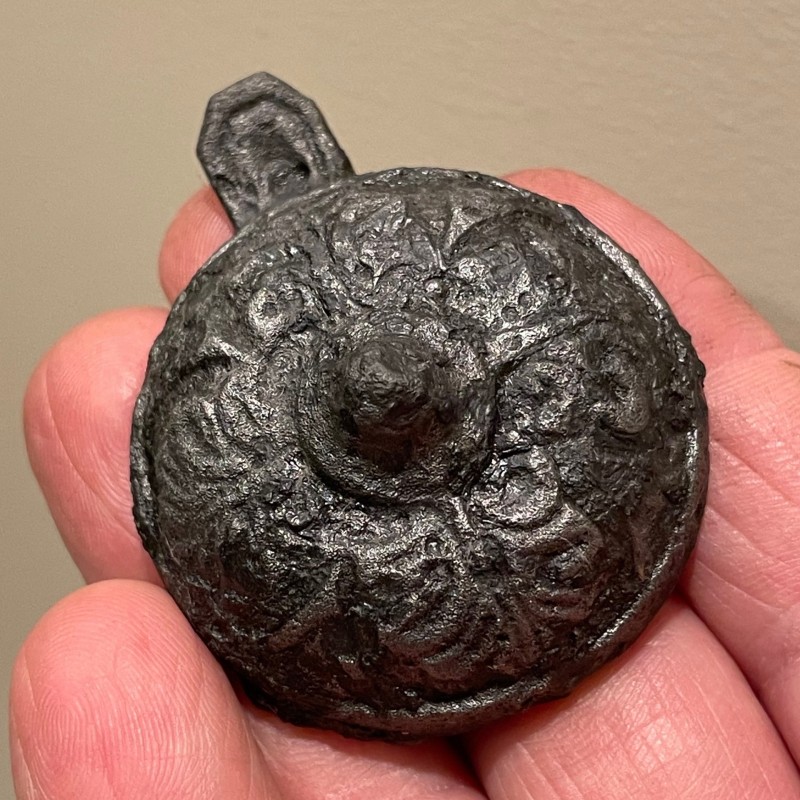
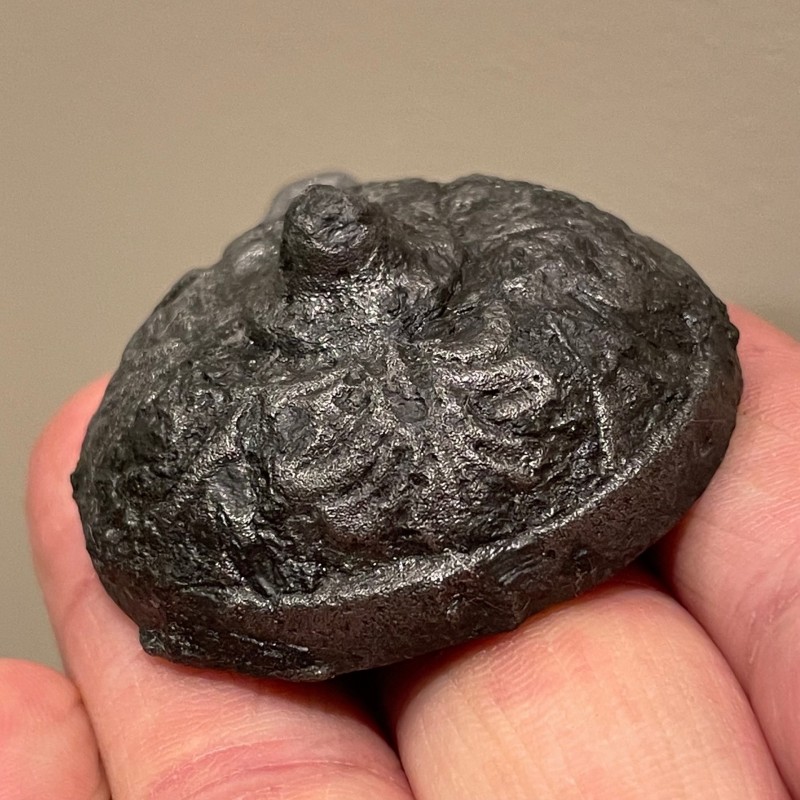
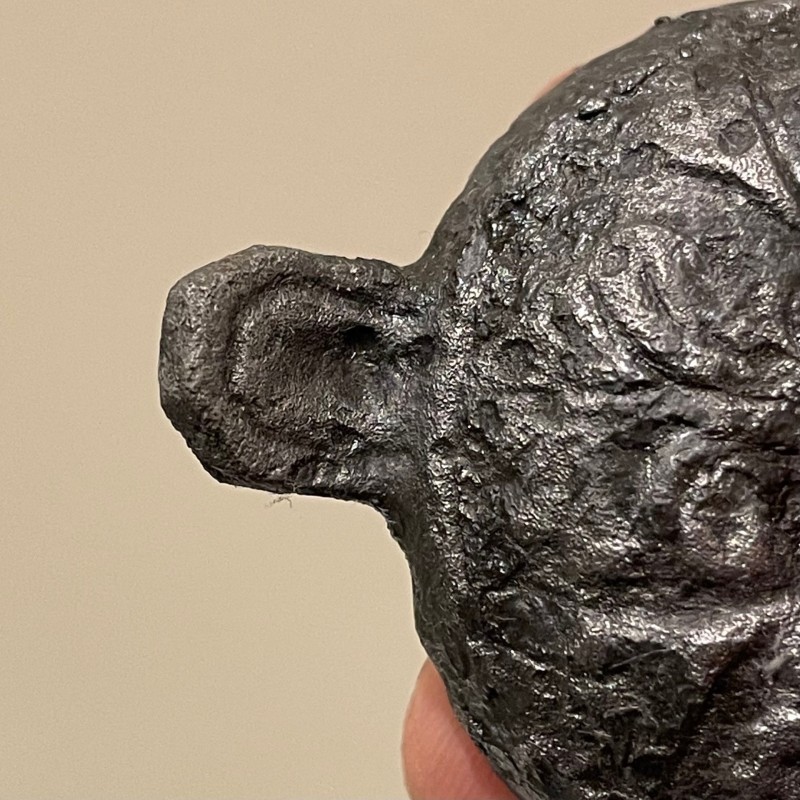
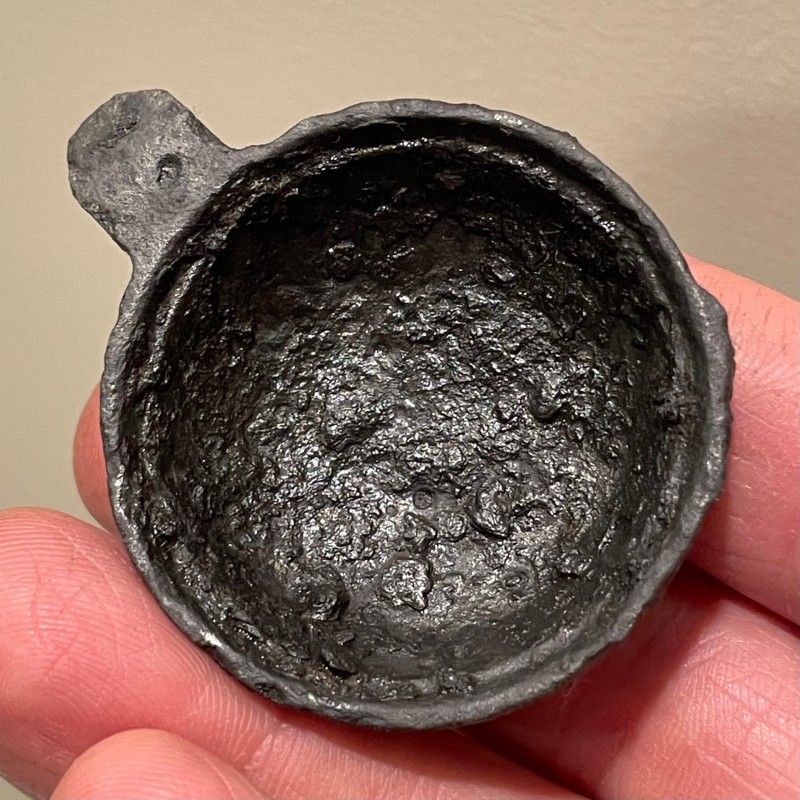

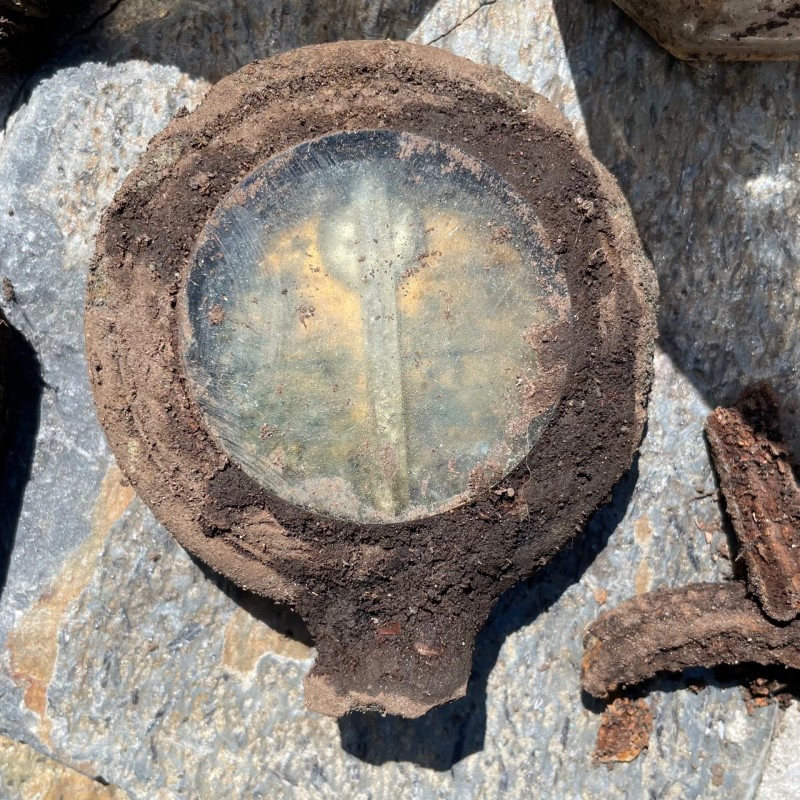
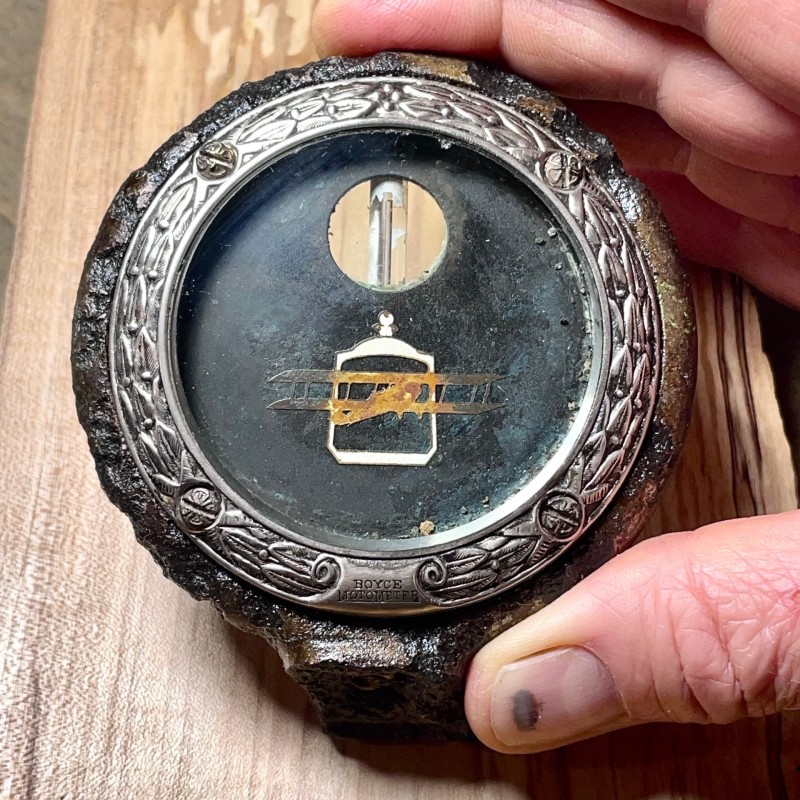
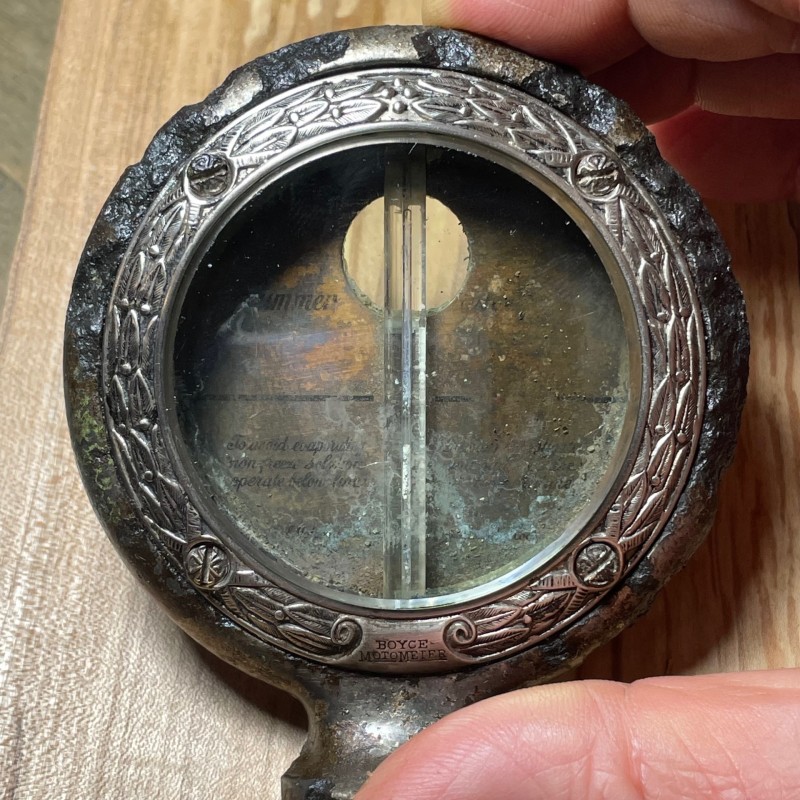
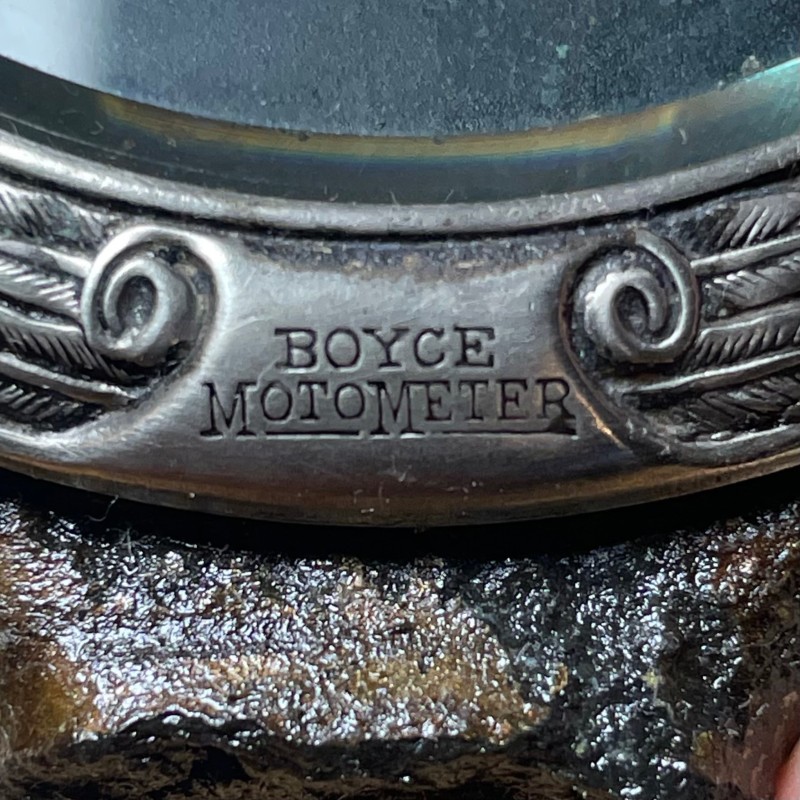
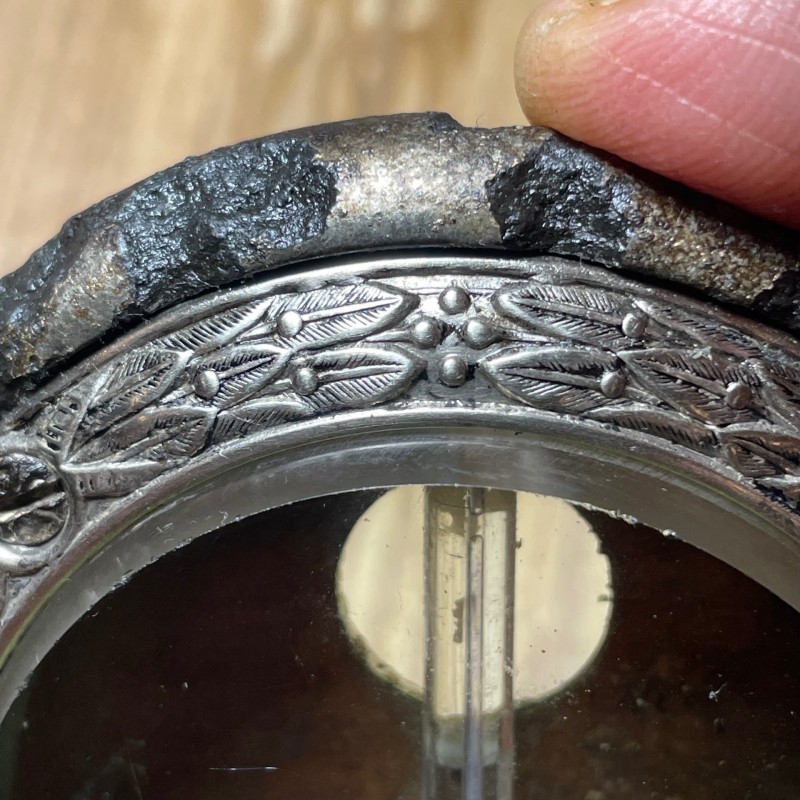
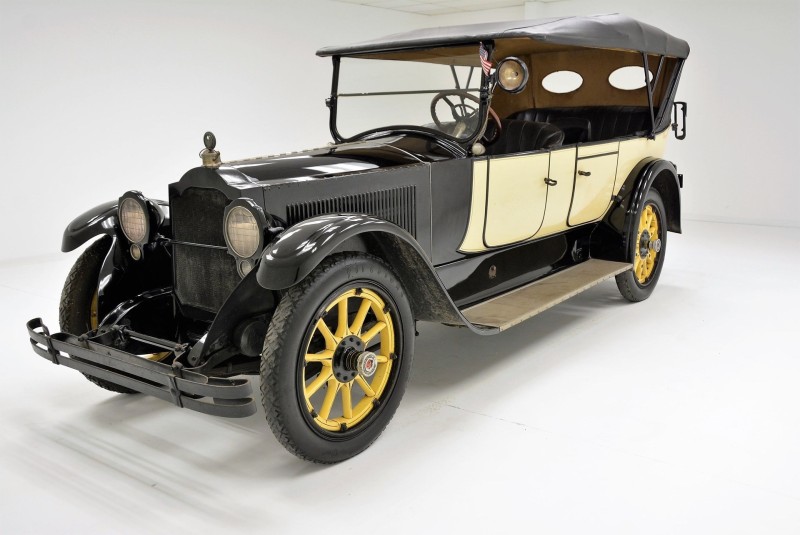
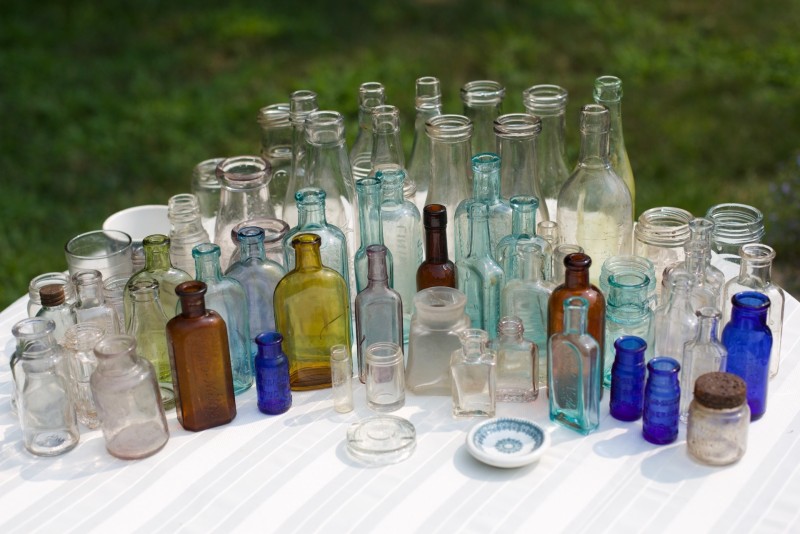
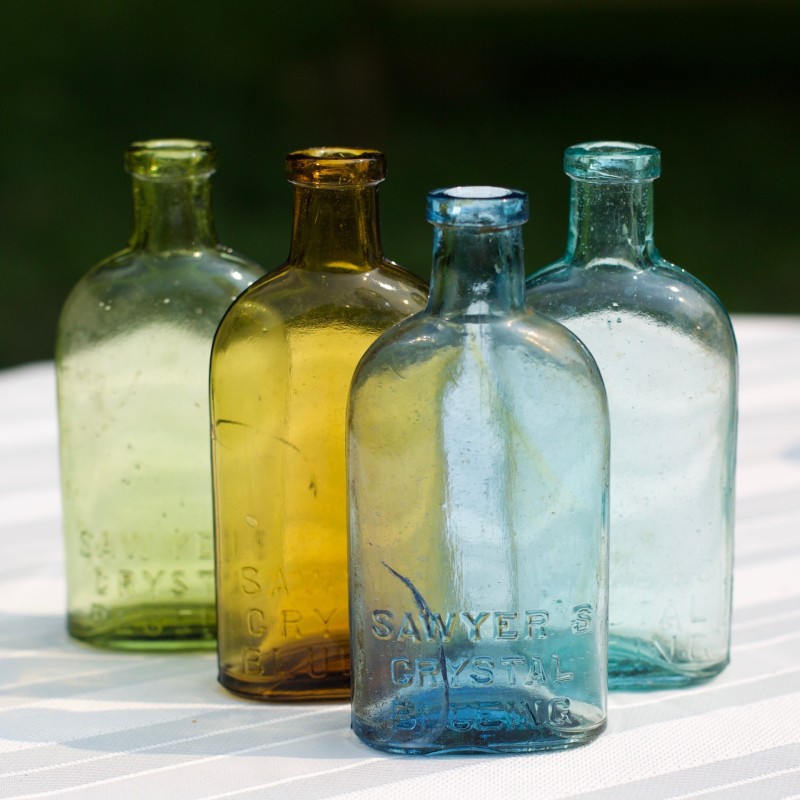
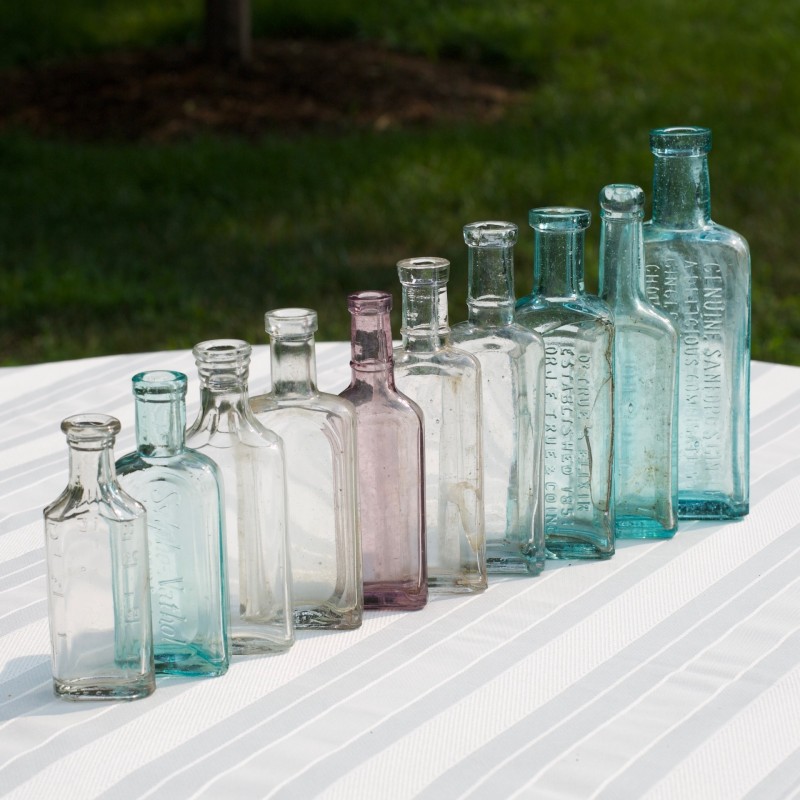
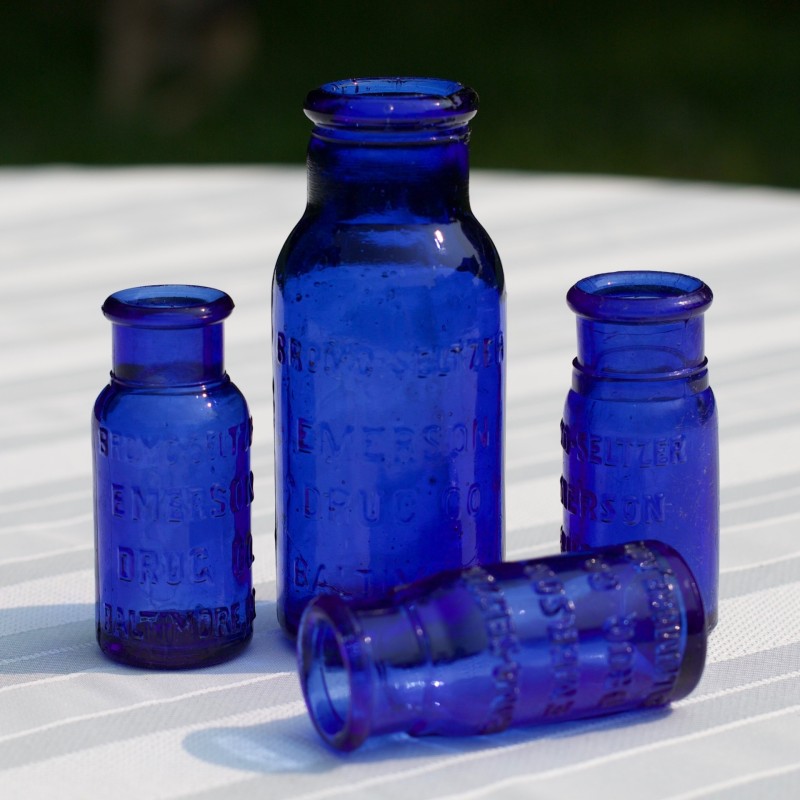
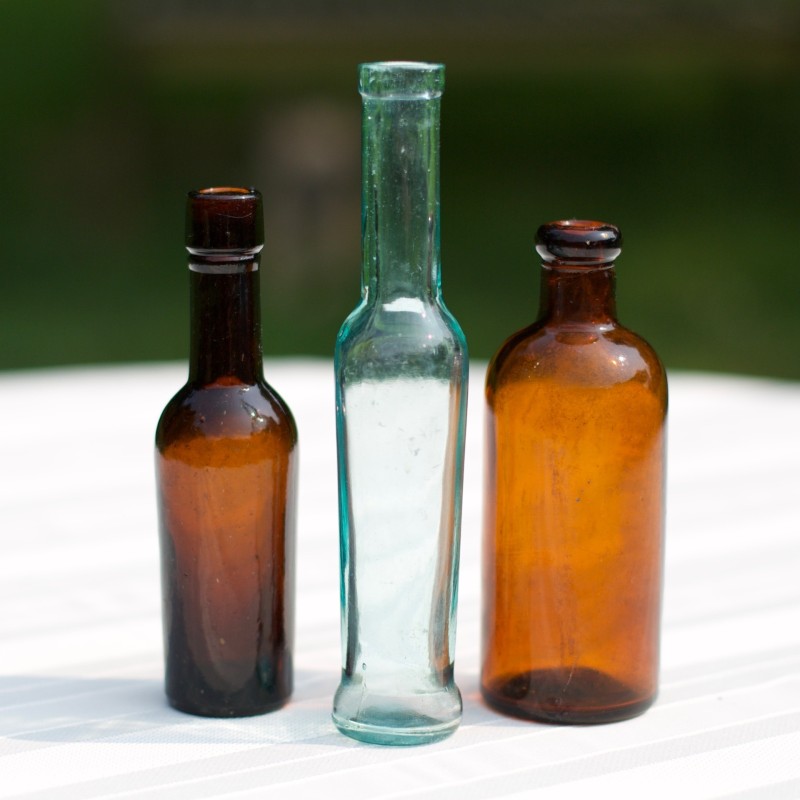
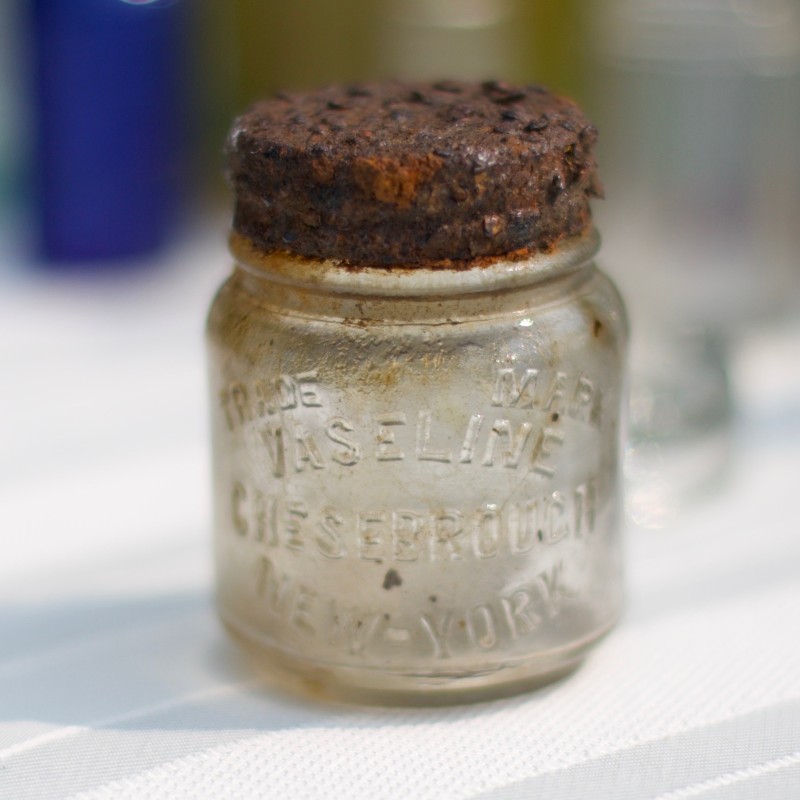
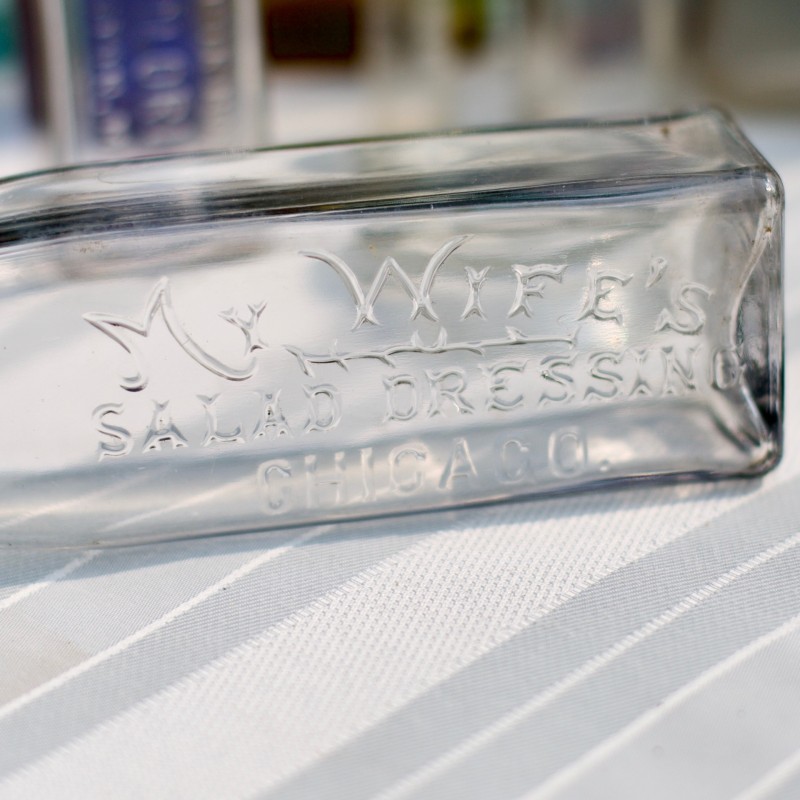
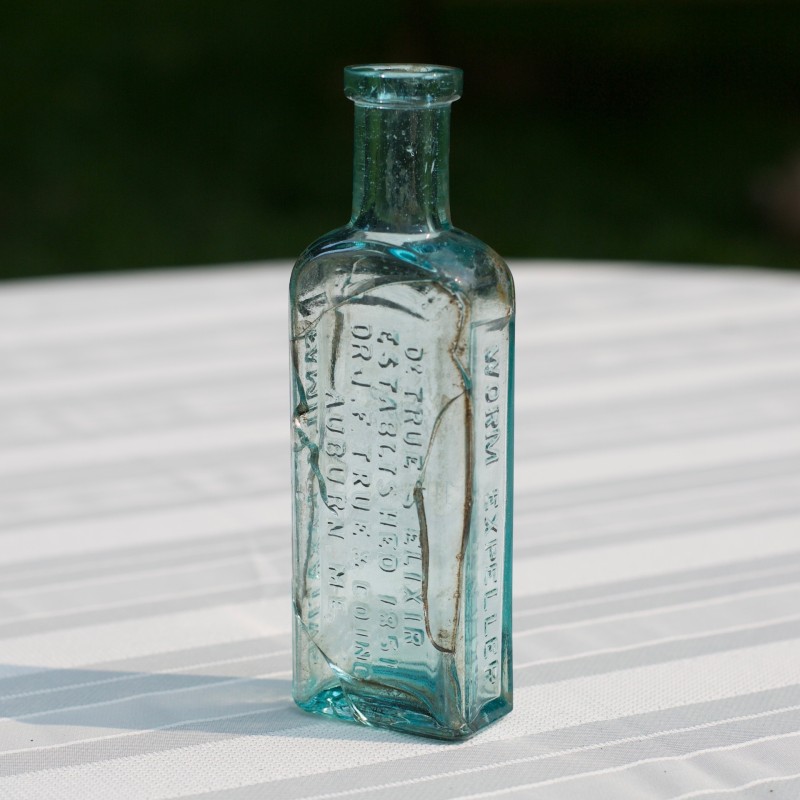
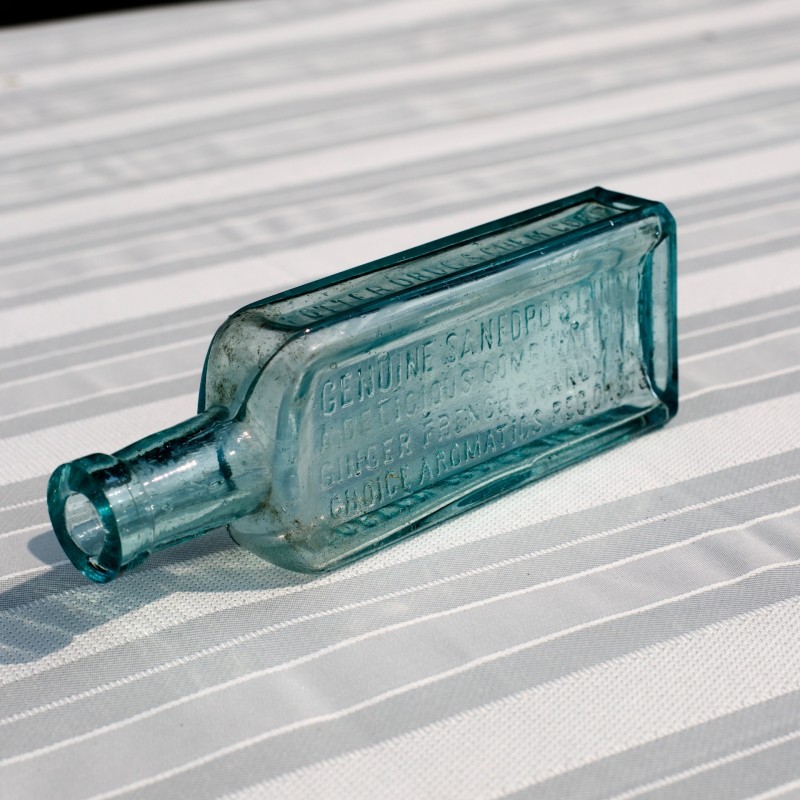
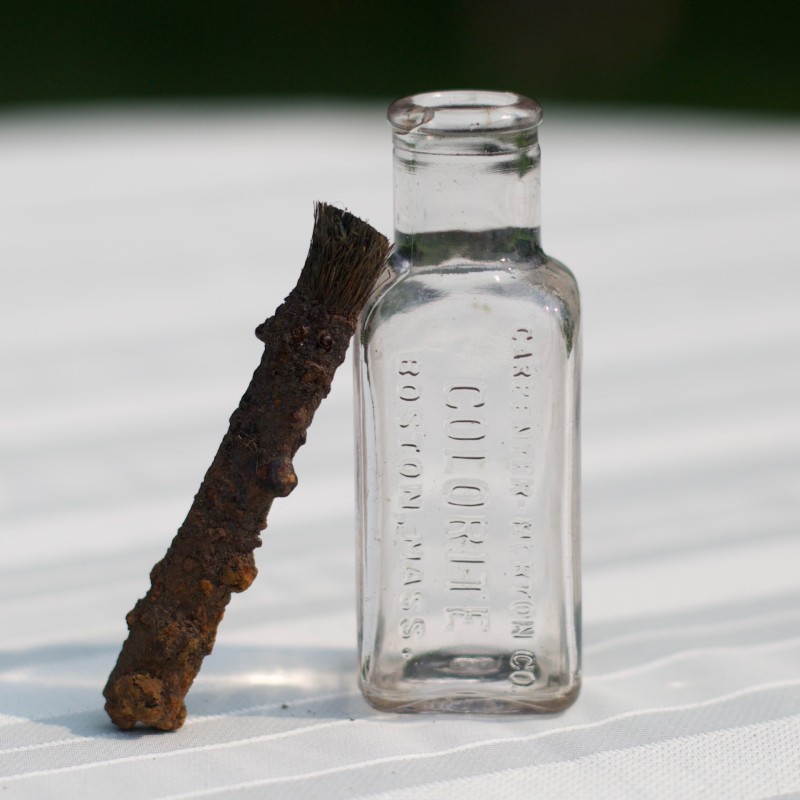
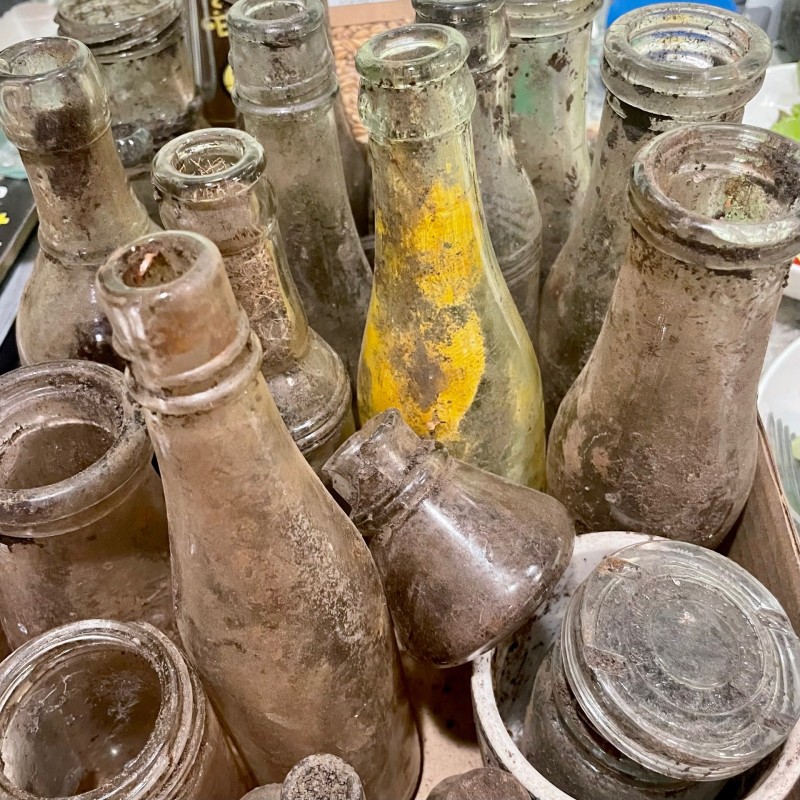
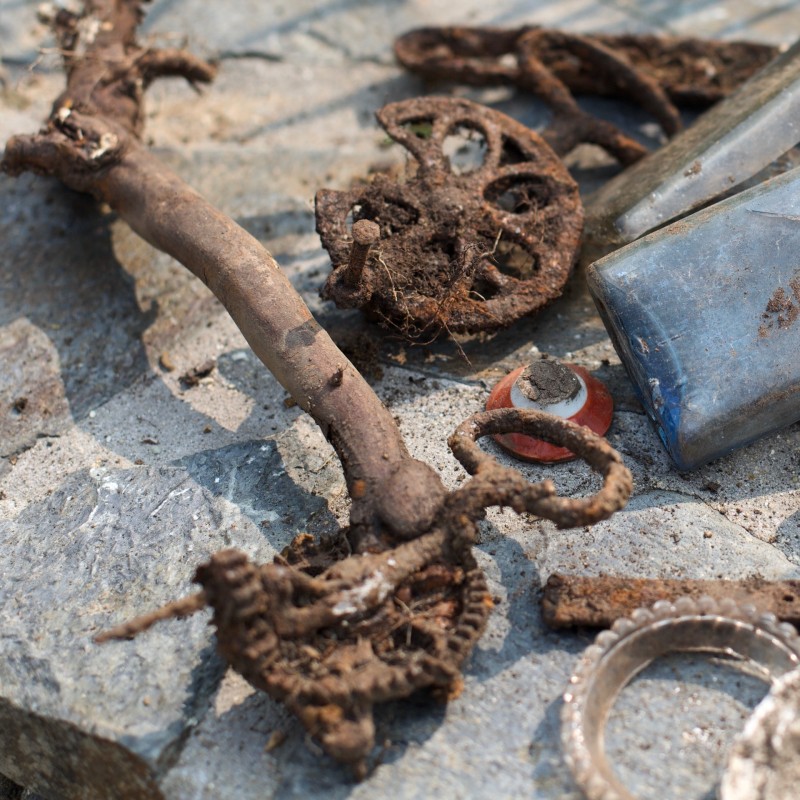
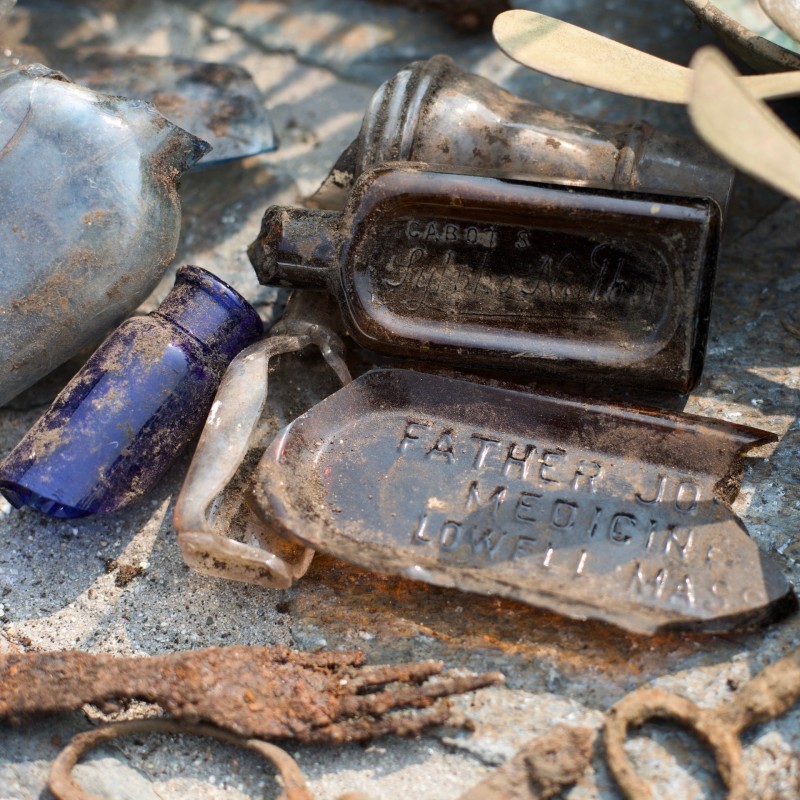
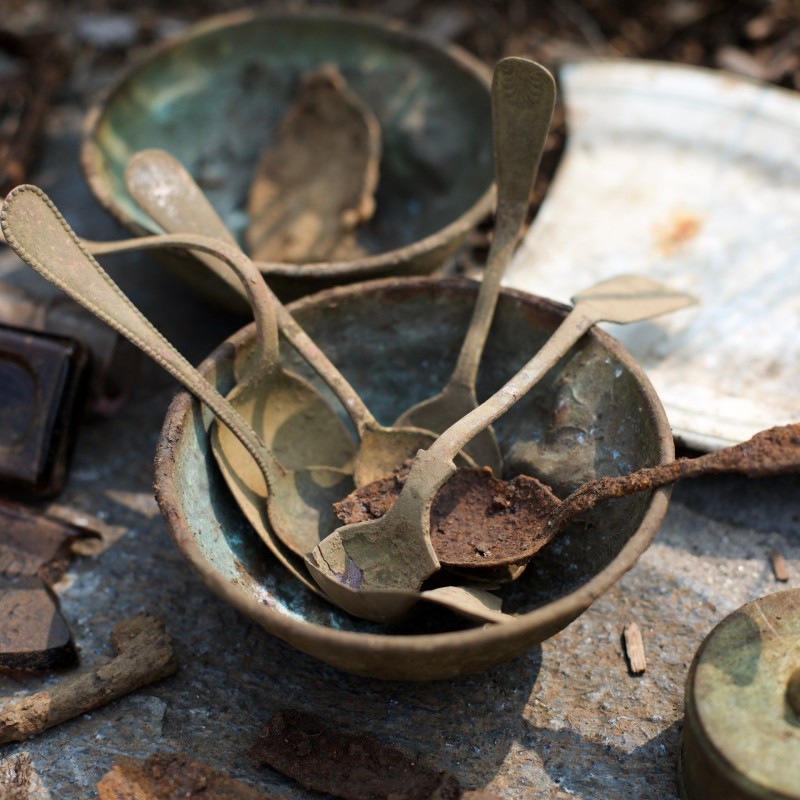
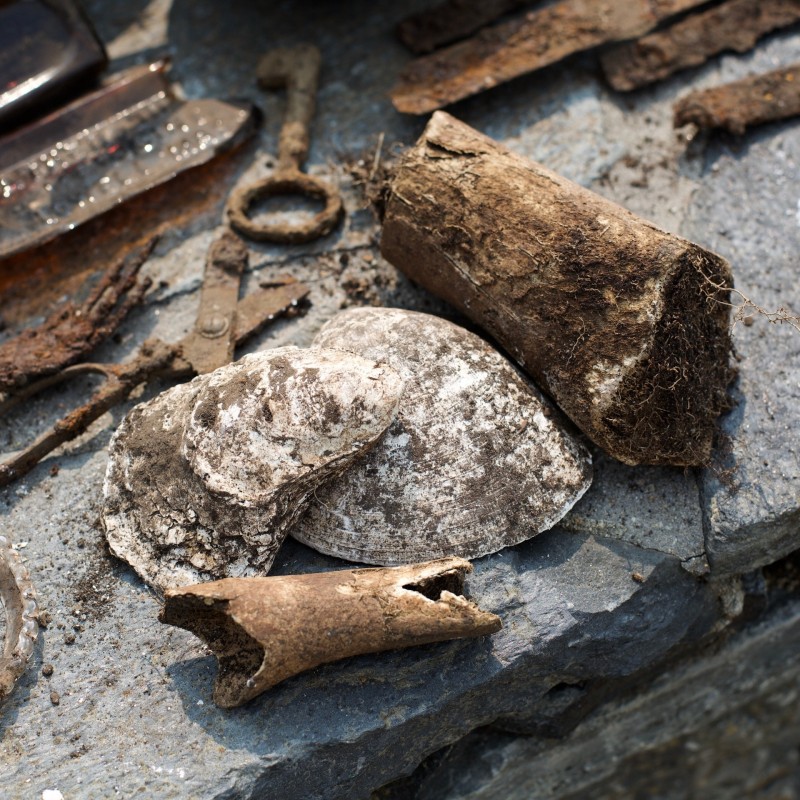

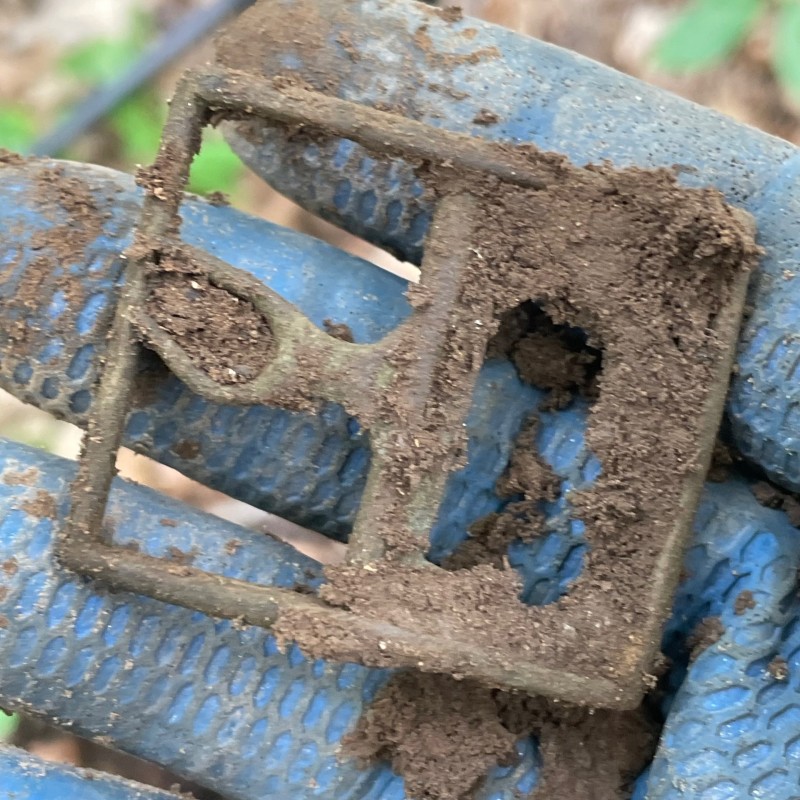
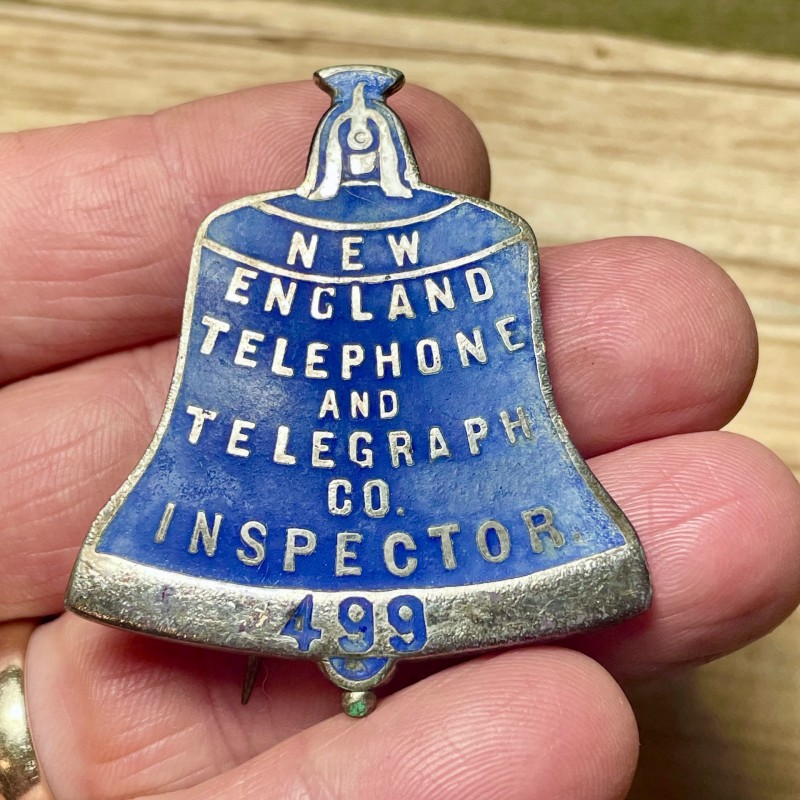
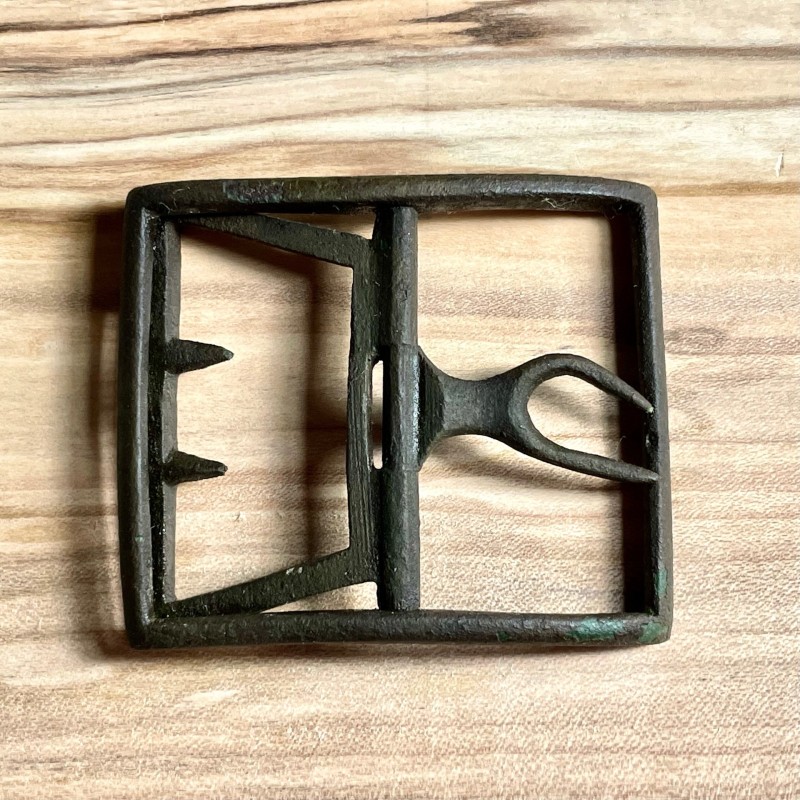
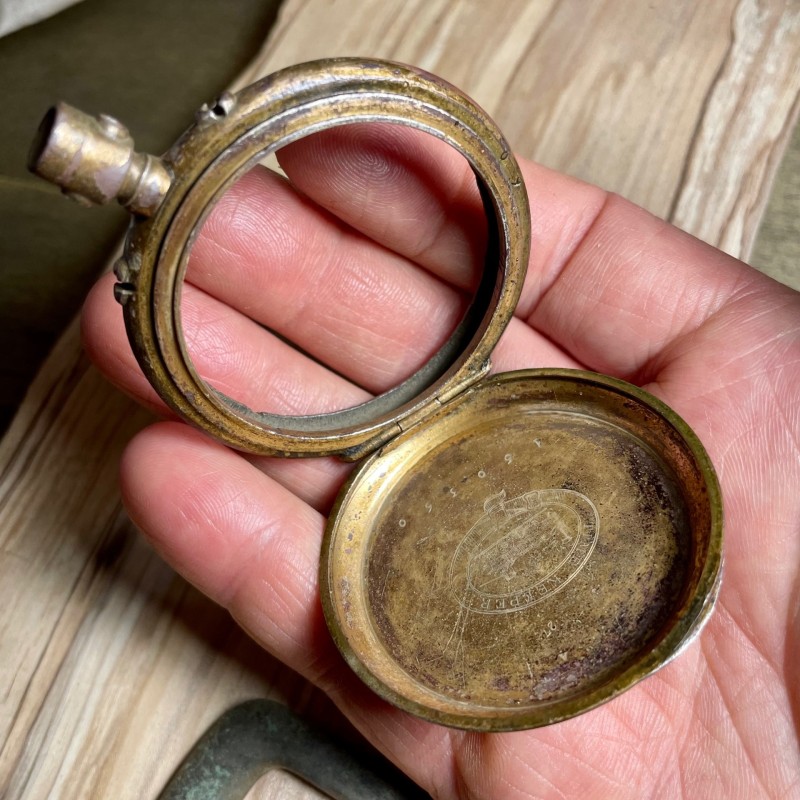
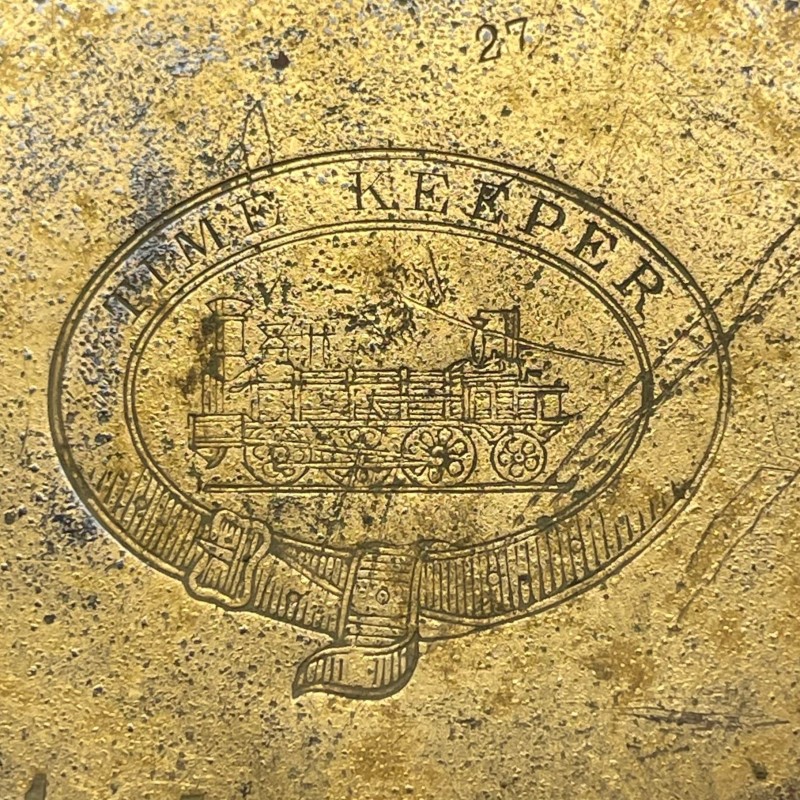
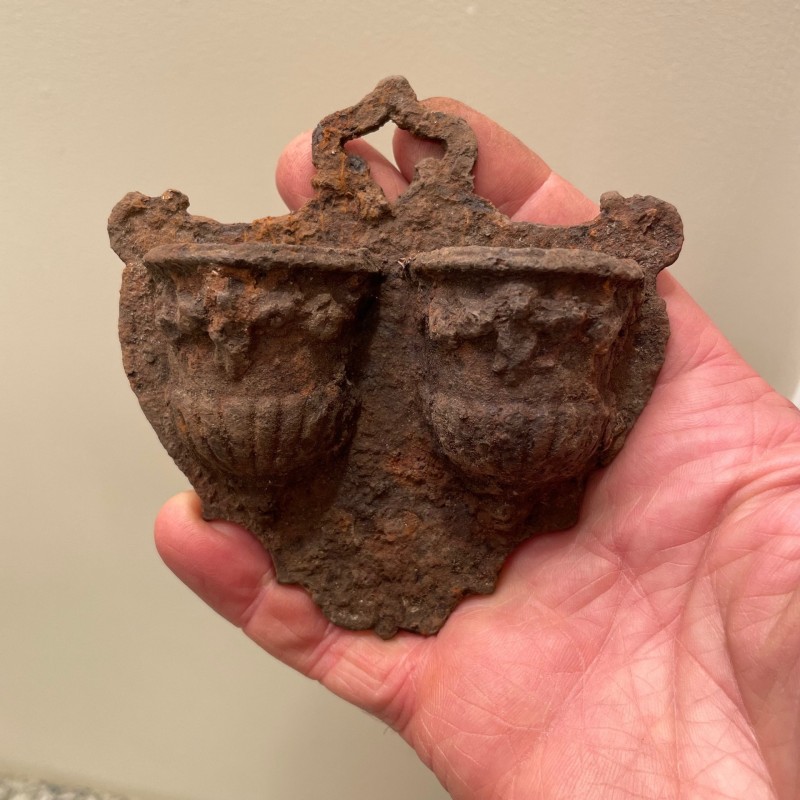
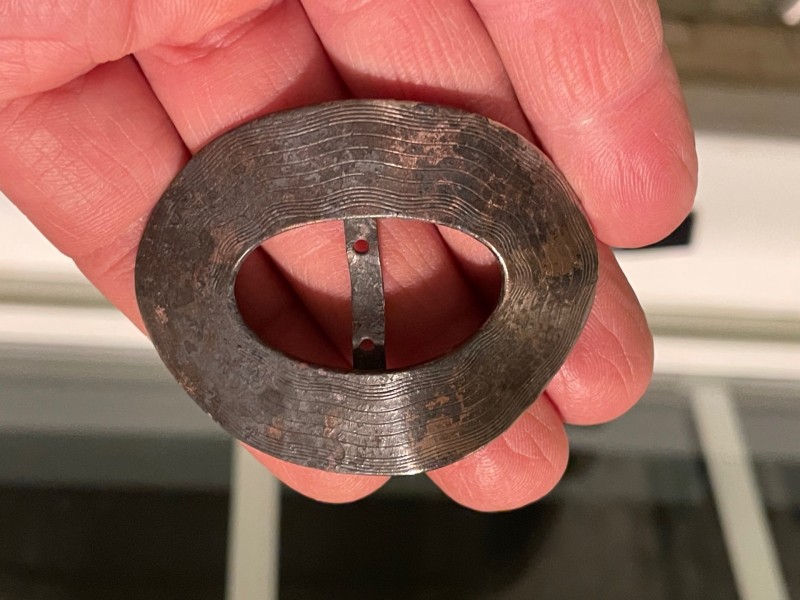
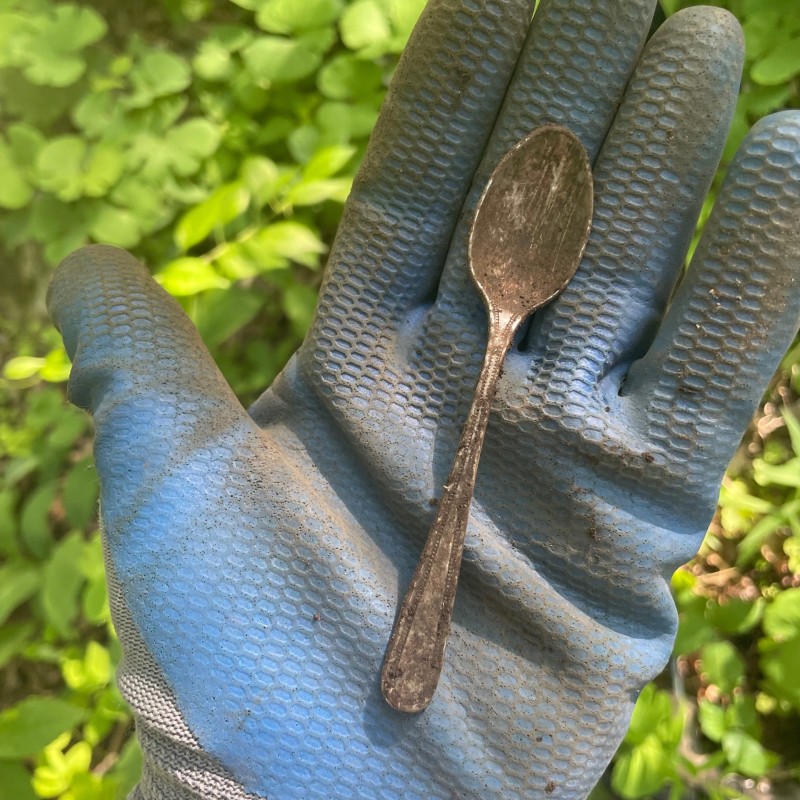
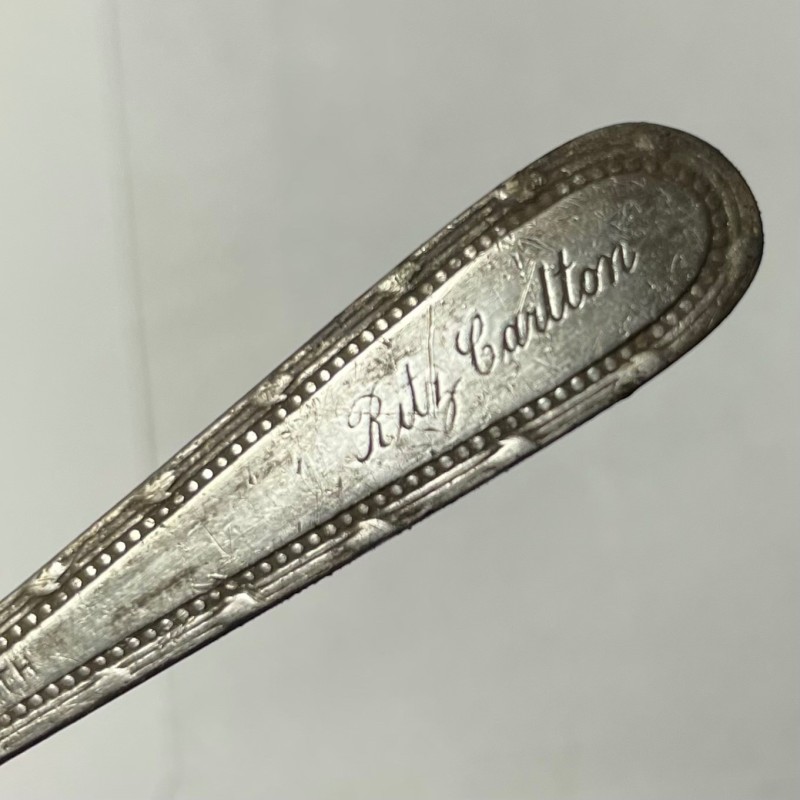
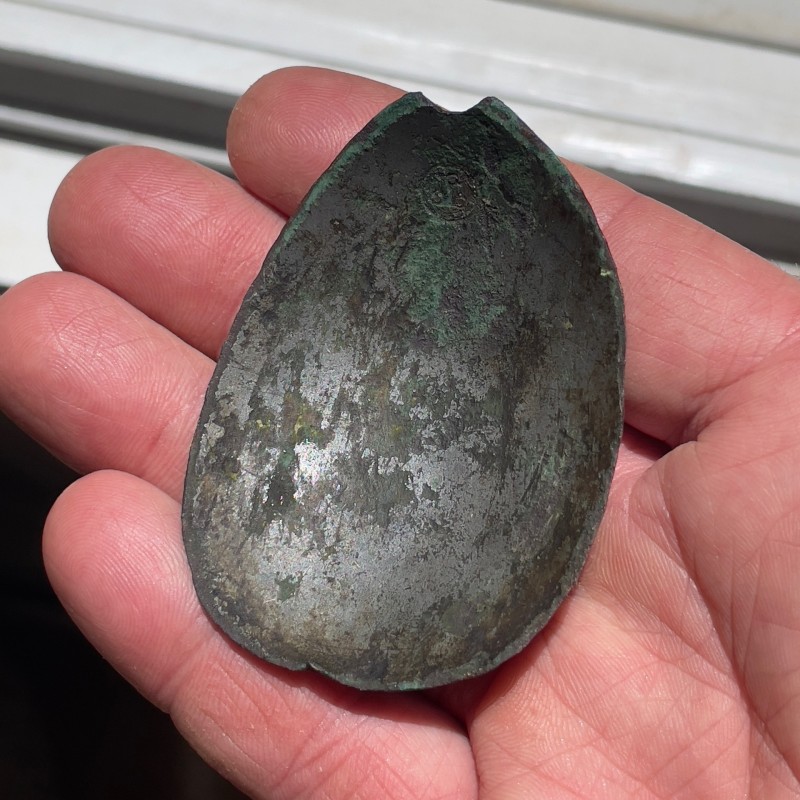
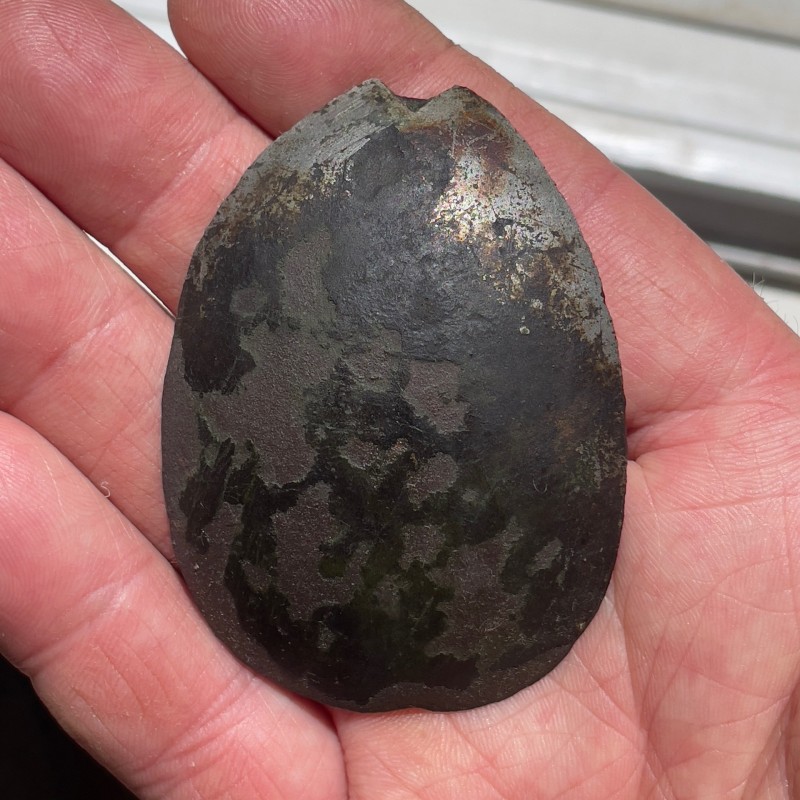
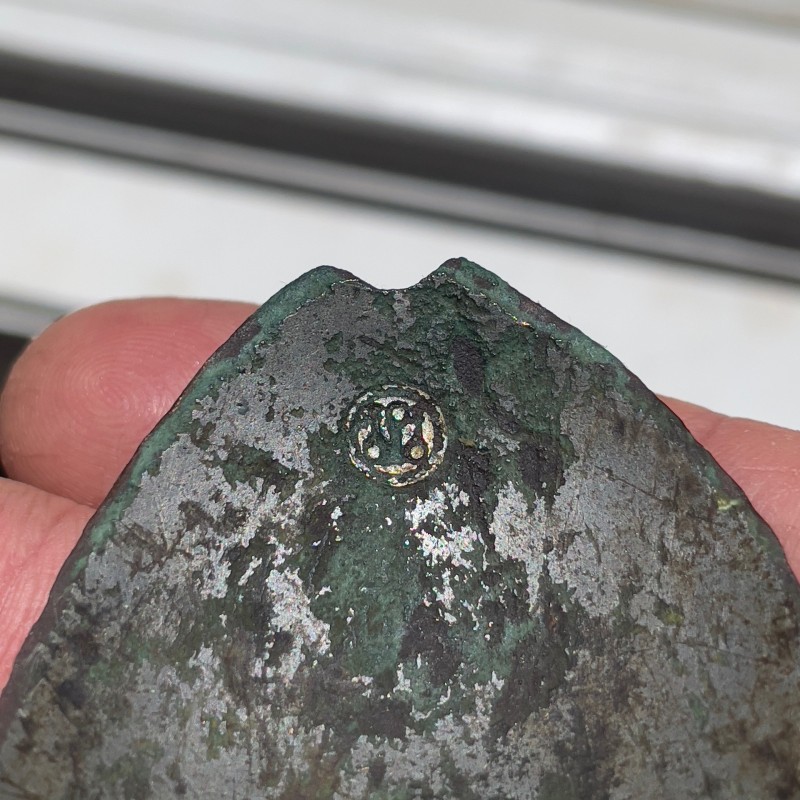
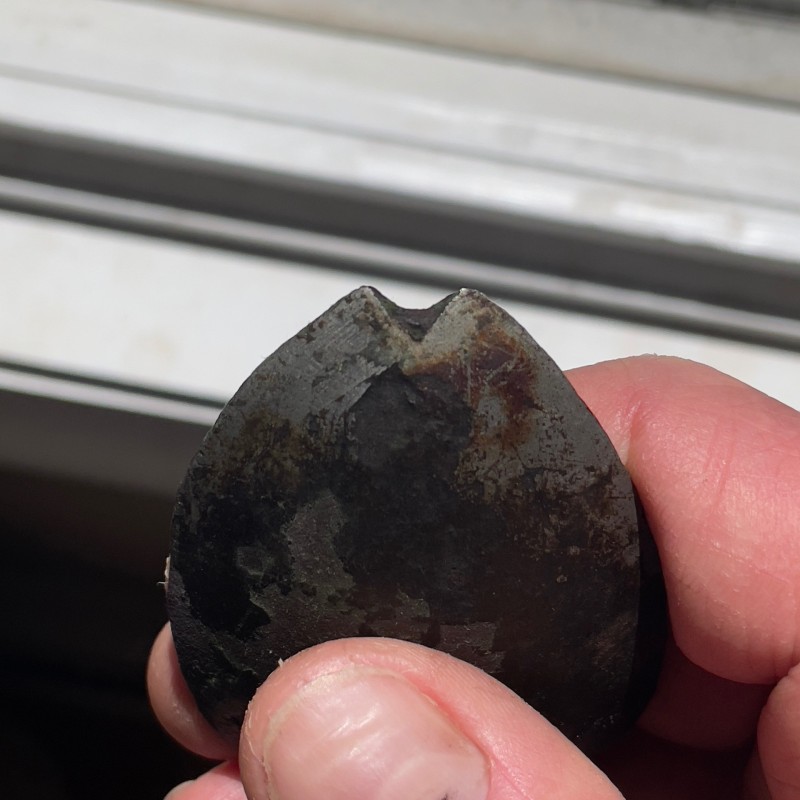
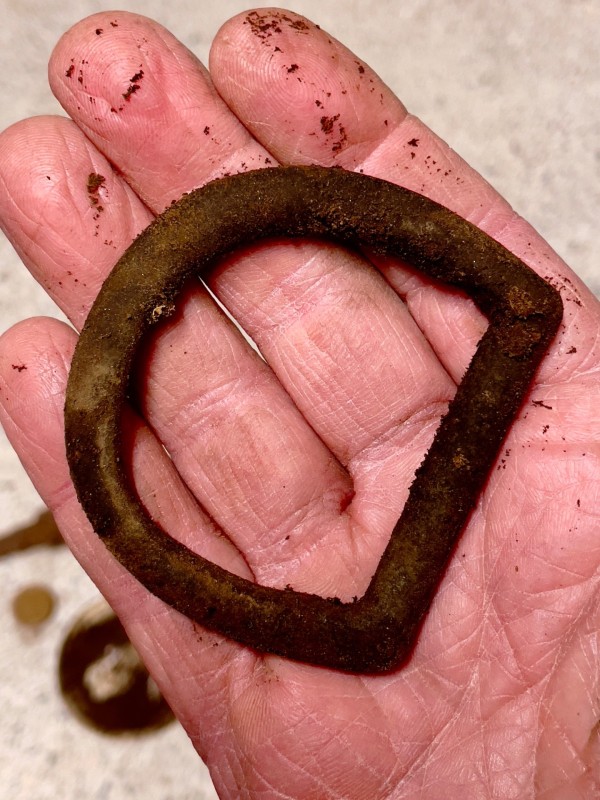
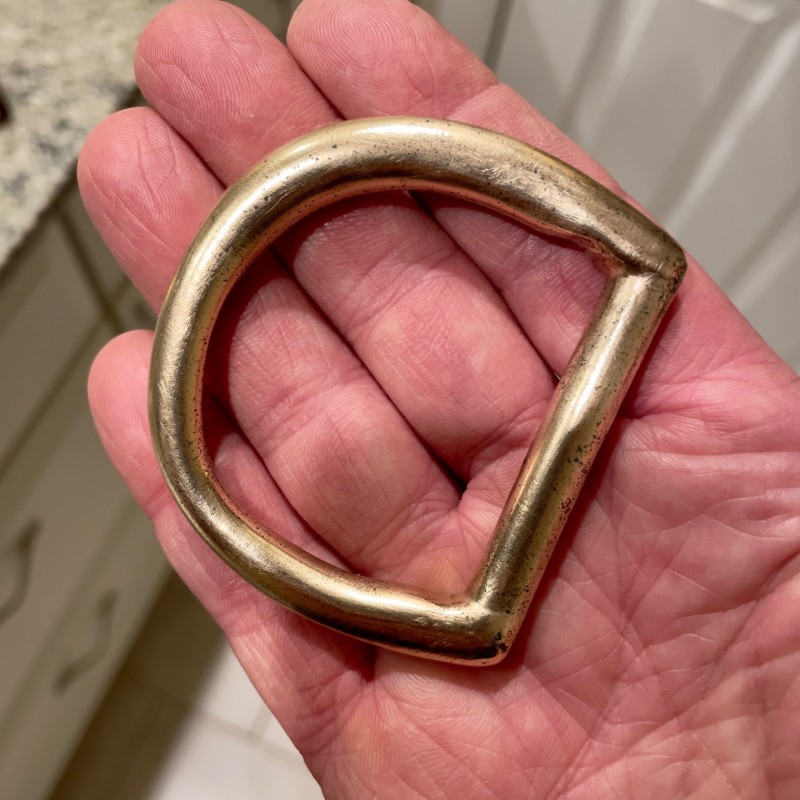
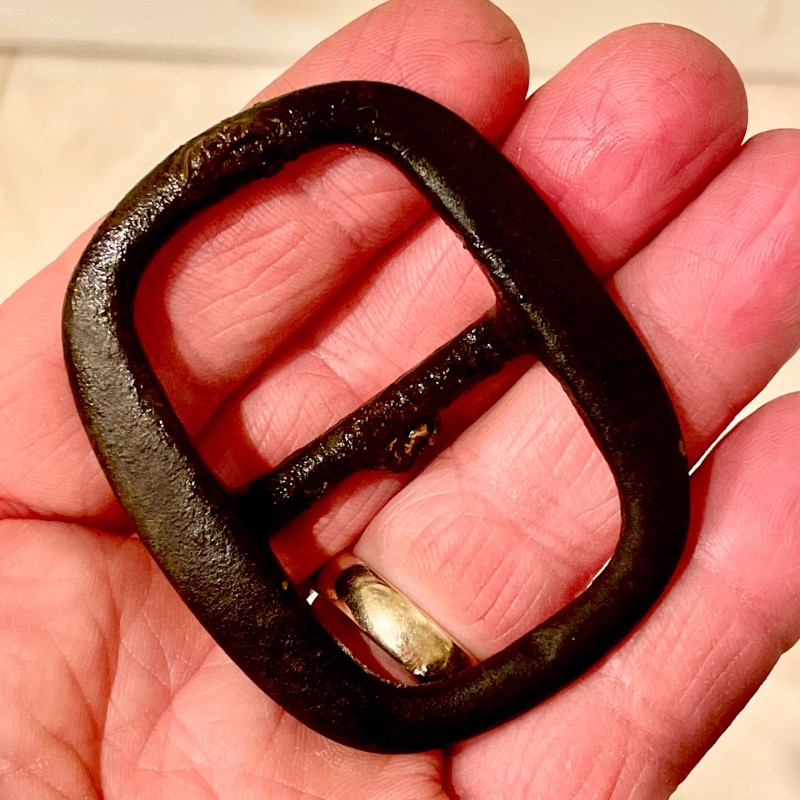
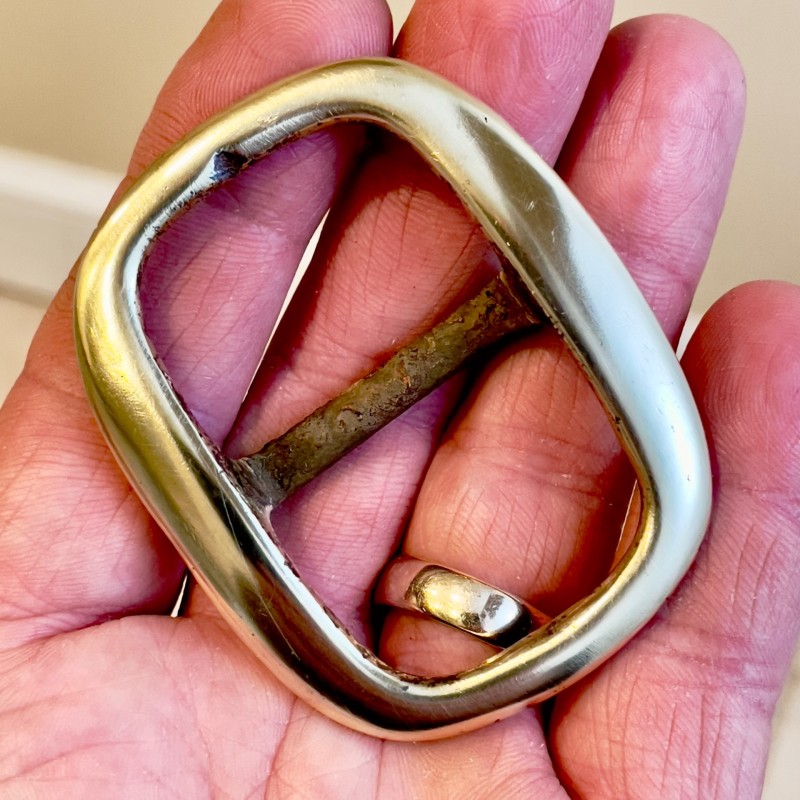
A Possible 18th Century Bit Boss
in Metal Detecting For Coins & Relics
Posted
I don't often forget to take a before picture, but when I do, it's always on a better find 😄